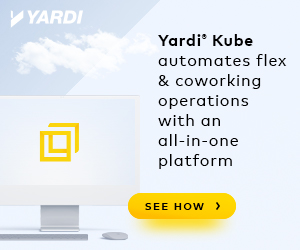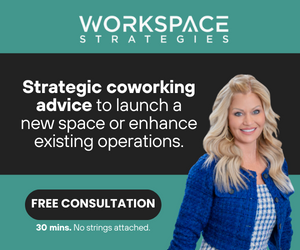- Natural communities within the workplace are most easily established and sustained via face-to-face interaction.
- Replicating the community-ness of early coworking spaces in company offices is entirely doable.
- Designing offices that are built around communities of 150 is a great place to start.
Nervous managers are continuing to struggle with return to office (RTO) mandates and other efforts to get their people back in the office. While some leaders and managers simply don’t trust their people to get work done on their own, others genuinely want to reestablish community connections in the organization. And for all the success that companies have had in terms of productivity during the pandemic-induced work from home experiment, there can be no question that natural communities are most easily established and sustained via face-to-face interaction.
As Cat Johnson suggests in her insightful article, “Community and the Future of Brand,” as well as in her recent Future of Work podcast, community is central to the human experience. Indeed, evolutionary anthropologist Joseph Henrich suggests that culture, or “the collective brain of our communities,” has largely accounted for the success of our species. So before anyone rushes to dismiss the power and value of community, as if community is some fluffy kumbaya exercise, it is important to underscore the role that community has played in the evolution of our species.
Community’s Scale Problem
However, there are limits to how well people can sustain communities. Evolutionary anthropologist Robin Dunbar has presented research showing that the average person can only genuinely know and trust around 150 people at a given time. Known as Dunbar’s law of 150, organizational scientists continue to test the notion, but many generally agree that there are limits to the number of people we can know and trust in a deep way.
Nigel Nicholson, Emeritus Professor of Organizational Behavior at London Business School, suggests that one way to think of this limit is by asking yourself “how many people could you borrow money from–say $20–without specifying when you might pay them back? How many people in your address book do you keep tabs on from year to year? How many people in your workplace or professional network do you have conversations with on repeated occasions?”
The explosion of contacts, connections, and friends on various social media platforms seemingly disproves Dunbar’s law, as some people have tens of thousands of “connections” that they are proud to boast about. But how intimate and “real” are these? This is not to suggest that social-media networking is either shallow or unimportant; rather, it is simply to question whether these contacts actually constitute community.
Lessons From (the Early Years of) Coworking
I return to Cat Johnson’s writing and speaking about community. The focus of her work is coworking, which in a historical sense has been one of the most surprising and important manifestations of community in the past several decades. While today coworking has grown into a global industry with around 34,000 spaces and with an industry size of $41B, coworking did not always operate at such scale.
For the first decade or so of the coworking movement, most spaces were local, quite small, and had little in the way of closed, private offices. People literally coworked at large tables in open spaces. The “co” in coworking had meaning.
For many years I was part of the ownership and management group at two coworking spaces (Austin and Birmingham), each of which was small and was defined by very close-knit communities. At Conjunctured in Austin, we had around…150 members. Many of our members were new to Austin, and they joined the community to find their first friend group. As a result, the relationships that flourished there were about much more than work.
Reflecting on the power of community in early coworking, as well as in smaller, more intimate coworking businesses operating today, there are four things that I think make for the ingredients of organic community.
1. Voluntary presence
There is something quite powerful when people go to a place because they want to be there. This confirms that humans are a social and communitarian species. Corporates have a lot to do on this front.
2. Open working
Before coworking evolved (or devolved) into rows and rows of private glass offices, we all spent our days physically with others in the community. Everyday conversations, lunches, brainstorms, pitch nights, field trips, concerts, dinners, and drinks often followed.
3. Community managers
Coworking 1.0 gave birth to a new breed of professional that bridges HR, facilities management, networking, and even counseling, that welcomes and supports people in ways that simply don’t (yet) exist in the corporate context.
4. Human scale
As Dunbar’s law suggests, there are limits to the size of communities in which we can fully participate. I think that early coworking spaces, and thus the success of the industry today, was premised on the fact that early coworking communities operated at a human scale.
Coworking Community and the Corporate Office
Replicating the community-ness of early coworking spaces in company offices is entirely doable, if equally unlikely. Each of the four points listed above is relevant to companies today as they navigate hybrid working and the struggle to get people back to the office and reclaim community.
Particularly, designing offices that are built around communities of 150 would be a great place to start. What if each community “neighborhood” had its own community manager? What if employees were free to choose when they come into the office?
In practice, this is not much of a stretch. However, translating insights from one domain to another is always difficult. For those companies that are serious about building communities in their organizations, look to spaces that are doing it well. I suggest checking out Indy Hall in Philadelphia. That is the real deal!

 Dr. Gleb Tsipursky – The Office Whisperer
Dr. Gleb Tsipursky – The Office Whisperer Cat Johnson – Coworking Marketing Maven
Cat Johnson – Coworking Marketing Maven Angela Howard – Culture Expert
Angela Howard – Culture Expert Drew Jones – Design & Innovation
Drew Jones – Design & Innovation Andrea Pirrotti-Dranchak – Competitive Advantage
Andrea Pirrotti-Dranchak – Competitive Advantage Jonathan Price – CRE & Flex Expert
Jonathan Price – CRE & Flex Expert Jeremy Fennema – Tech Innovation Alchemist
Jeremy Fennema – Tech Innovation Alchemist







